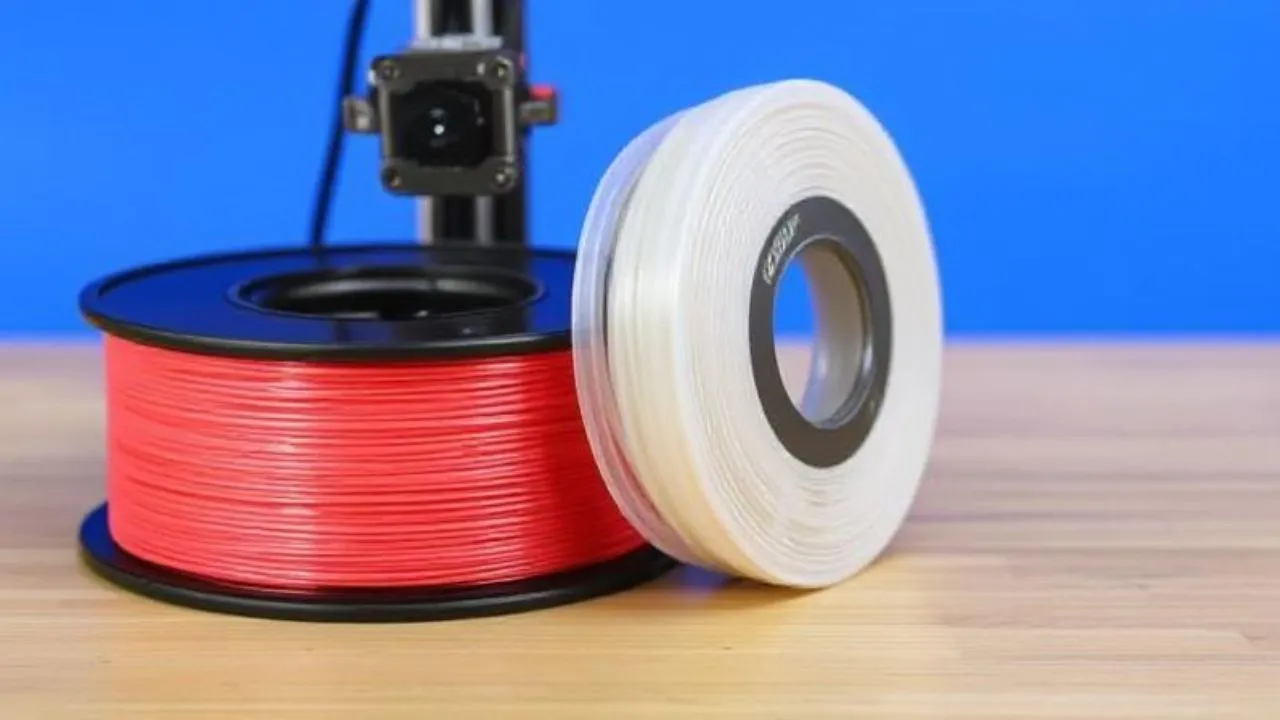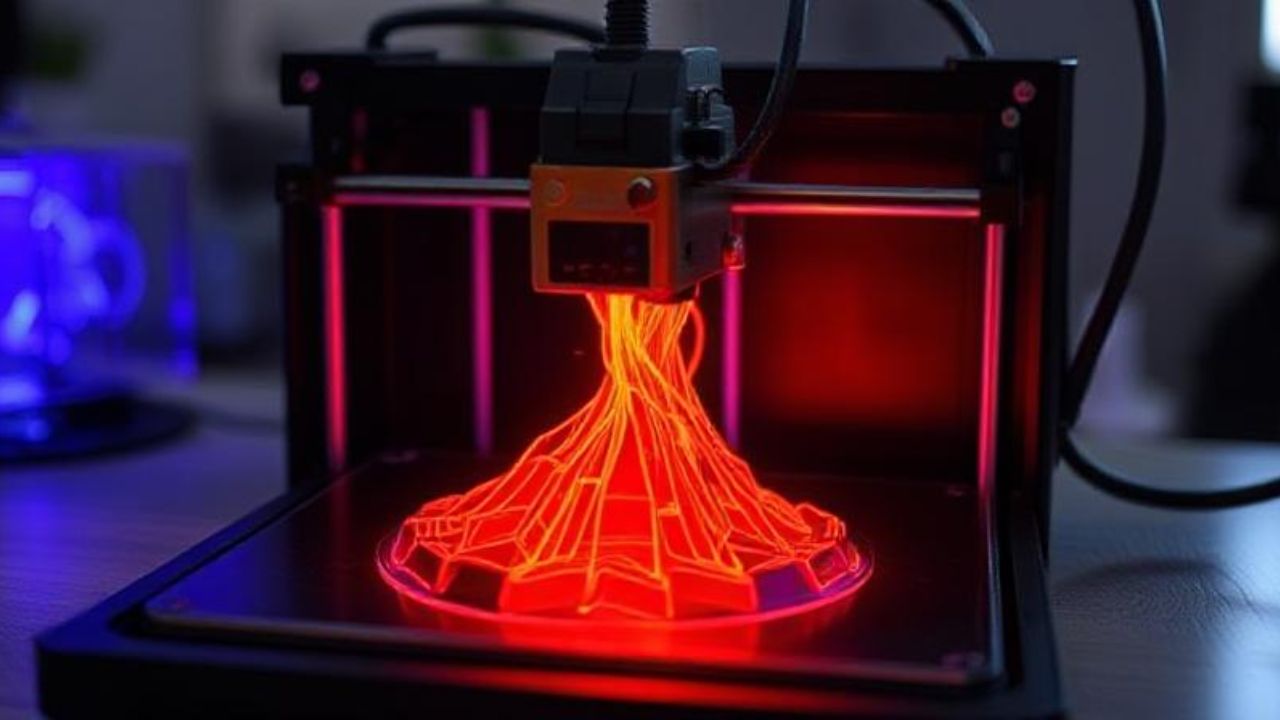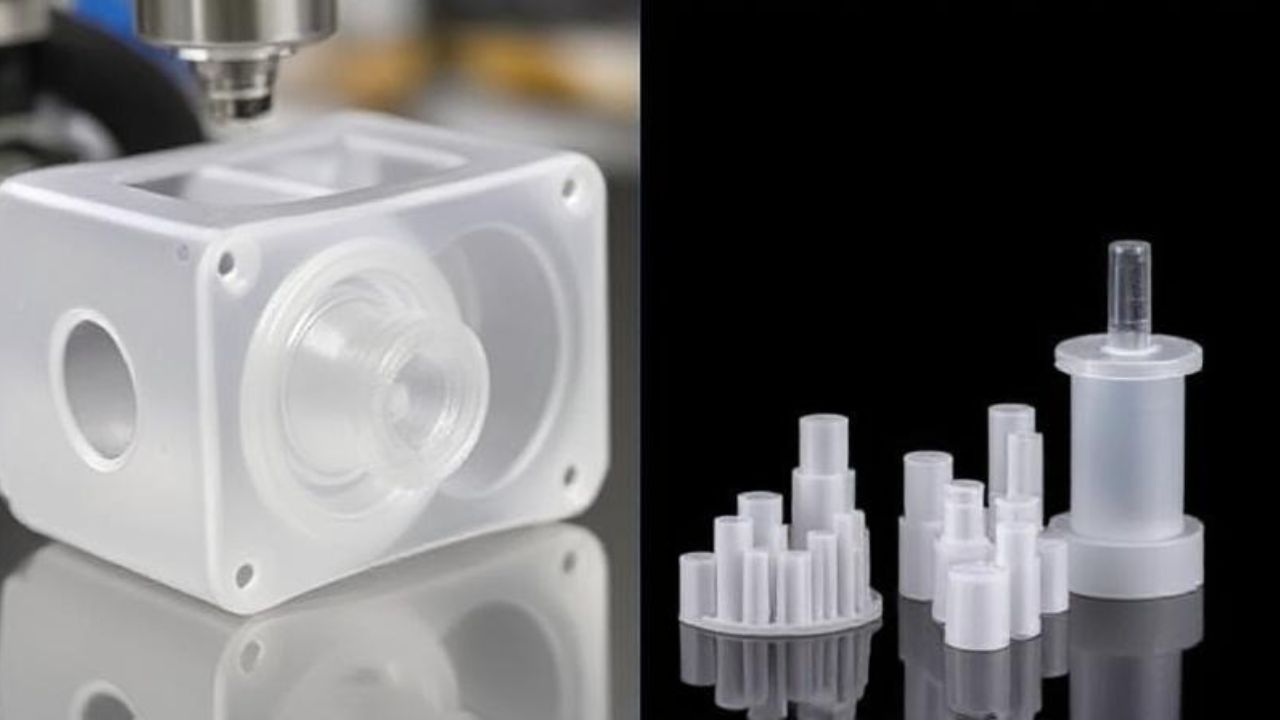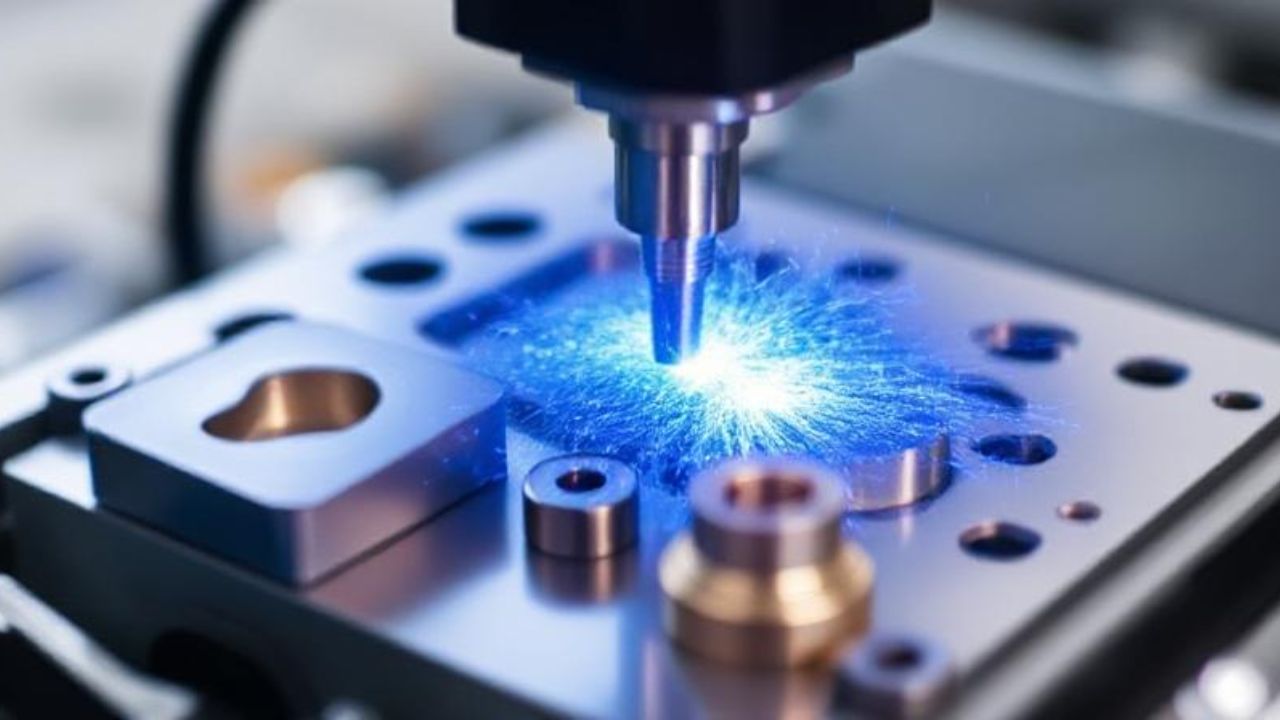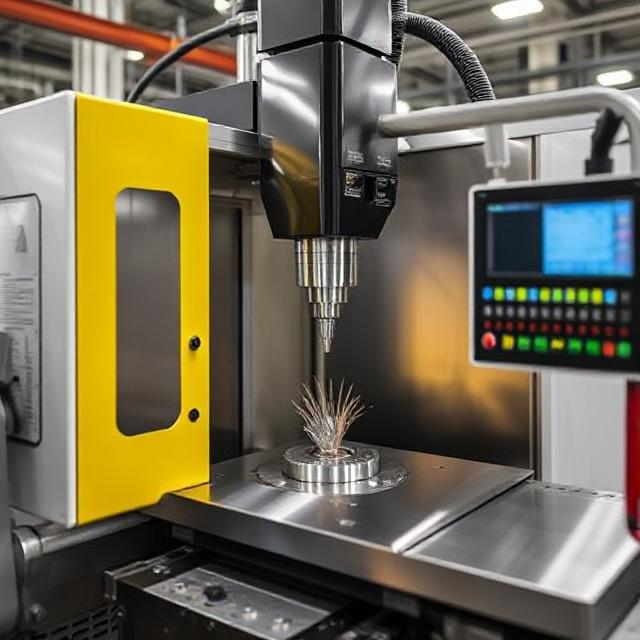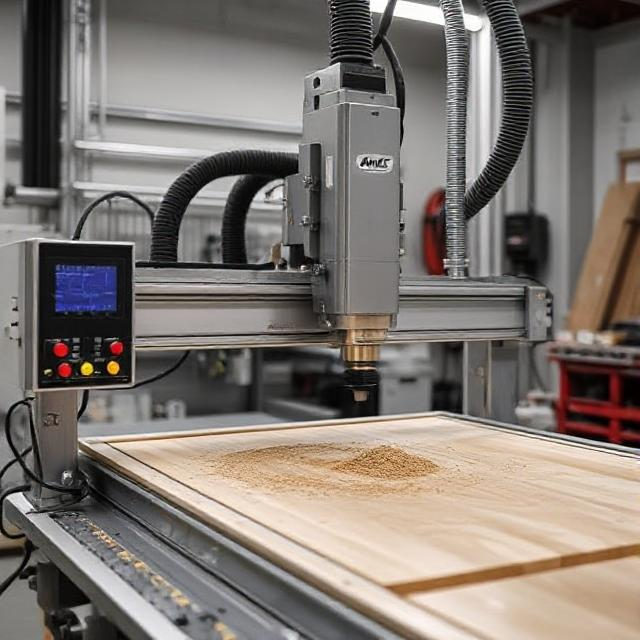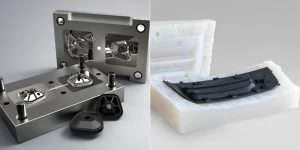Wenn Sie nach Möglichkeiten suchen, Ihre Produktidee schneller auf den Weg zu bringen, sind Sie hier genau richtig. Jeder möchte seinen Entwicklungszyklus verkürzen und Produkte ohne Verzögerungen auf den Markt bringen. Hier kommt das Spritzgießen von Prototypen ins Spiel. Er hilft dabei, Entwürfe schnell in greifbare Teile zu verwandeln, was sowohl Zeit als auch Geld spart.
Die Produktentwicklung kann eine spannende, aber auch nervenaufreibende Reise sein. Sie haben ein neues Konzept, das Sie testen, verfeinern und dann auf den Markt bringen müssen. In vielen Fällen kann sich dieser Prozess wie eine Ewigkeit anfühlen - vor allem, wenn Sie sich auf langsame oder veraltete Fertigungsmethoden verlassen. Sie möchten einfach nur, dass Ihre Idee zum Leben erweckt wird, ohne sich in endlosen Überarbeitungen zu verheddern. In diesem Artikel erfahren Sie, wie das Spritzgießen von Prototypen die Produktentwicklung beschleunigt. Am Ende werden Sie einen klaren Fahrplan haben, wie Sie Ihr Design in Rekordzeit zum Leben erwecken können.
Prototyp-Spritzgießen in aller Kürze
Beim Prototypenspritzguss handelt es sich um ein spezielles Verfahren, bei dem schnell eine Form hergestellt wird, um kleine Serien von Kunststoffteilen für Tests zu produzieren. Diese Methode verkürzt die Wartezeiten, da die komplizierten Schritte des Formenbaus entfallen. Es ist ideal für frühe Produktüberarbeitungen und ermöglicht es den Teams, Entwürfe schneller und kostengünstiger zu verfeinern.

Rapid Tooling
Beim Rapid Tooling werden Formeinsätze mit schnelleren und kosteneffizienteren Methoden hergestellt. Dadurch werden die Produktionsvorlaufzeiten drastisch verkürzt. Da die Werkzeuge schnell hergestellt werden, können Sie Spritzgießen So können wir Teile früher herstellen, Konstruktionsfehler frühzeitig erkennen und teure Fehlentwicklungen in der späteren Produktion vermeiden.
Kleinserienproduktion
Kleinserienproduktion bedeutet, dass Sie nur eine begrenzte Anzahl von Teilen gießen können. Dies eignet sich hervorragend für die Erprobung neuer Konzepte oder die Evaluierung verschiedener Materialien. Weniger Teile bedeuten auch geringere Materialkosten, so dass es eine wirtschaftliche Möglichkeit ist, die Leistung zu bewerten, bevor man zu größeren Serien übergeht.
Flexibilität bei der Gestaltung
Designflexibilität ist der Schlüssel zum Prototypenspritzgießen. Sie können mit Merkmalen wie Schnappverschlüssen, Rippen oder benutzerdefinierten Texturen experimentieren. Dank der kurzen Durchlaufzeit lässt sich schnell feststellen, was funktioniert und was nicht. Mit jeder Iteration können Sie die Form und Funktion des Produkts verbessern, ohne ein großes finanzielles Risiko einzugehen.
Beschleunigung des Entwurfszyklus
Jeder möchte Produkte so schnell wie möglich auf den Markt bringen. Mit Prototyp-Spritzgießenkönnen Sie den Designzyklus drastisch verkürzen. Bei herkömmlichen Methoden kann es Wochen oder Monate dauern, einen Prototyp zu erstellen, ihn zu testen und dann wieder von vorne anzufangen, wenn Sie Probleme finden. Dieses langsamere Tempo kann entmutigend sein, vor allem, wenn die Konkurrenten scheinbar täglich neue Produkte auf den Markt bringen.
Der Prototypenspritzguss ändert diesen Zeitplan. Durch die Verwendung von Schnellformwerkzeugen aus Aluminium oder anderen leicht zu bearbeitenden Materialien wird die Vorbereitungsphase für die Werkzeuge verkürzt. Sobald die Form fertig ist, können Sie eine kleine Charge von Teilen herstellen, sie testen und dann weitermachen. Wenn Änderungen erforderlich sind, können Sie die Form optimieren oder eine neue bauen, ohne große Kosten oder Zeitaufwand.
Schlüsselmaterialien für den Prototypenspritzguss
Die Materialien spielen eine entscheidende Rolle für den Erfolg Ihres Endprodukts. Das Schöne am Prototypenspritzgießen ist, dass Sie nicht auf einen oder zwei Kunststoffe beschränkt sind. Stattdessen können Sie aus einer breiten Palette von Thermoplasten und Harzen wählen. Jedes Material bietet einzigartige Eigenschaften wie Flexibilität, Festigkeit oder Temperaturbeständigkeit.
- ABS (Acrylnitril-Butadien-Styrol): Bekannt für seine Zähigkeit und Schlagfestigkeit. Ideal für Konsumgüter oder Gehäuse.
- Polypropylen (PP): Leichtes Gewicht und gute chemische Beständigkeit. Wird häufig für Verpackungen und Haushaltswaren verwendet.
- Polycarbonat (PC): Hohe Klarheit und ausgezeichnete Festigkeit. Üblich für Schutzkleidung, Automobilteile und Elektronik.
- Nylon (PA): Aufgrund seiner Festigkeit und Verschleißbeständigkeit eignet es sich hervorragend für mechanische Teile.
Berücksichtigen Sie bei der Auswahl des Materials die Funktion Ihres Teils, die Umgebung und die Belastungspunkte. Durch die Wahl des richtigen Kunststoff-Spritzgussstellen Sie sicher, dass sich Ihr Prototyp ähnlich verhält wie das endgültige Produktionsstück.
Profitierende Branchen
Der Prototypenspritzguss wird in einer Vielzahl von Branchen eingesetzt. Es ist nicht nur auf einen bestimmten Sektor oder eine bestimmte Art von Produkt beschränkt. Überall können Unternehmen, die schnelle, zuverlässige Musterteile zur Validierung ihrer Entwürfe benötigen, dieses Verfahren nutzen.
- Automobilindustrie: Automobilhersteller verwenden Prototypen, um die Passform, Funktion und Aerodynamik von Bauteilen zu testen.
- Unterhaltungselektronik: Technische Riesen formen Gehäuse und Innenteile, um die Haltbarkeit zu prüfen, bevor sie das Design fertigstellen.
- Medizinische Geräte: Medizintechniker erstellen Prototypen, um zu prüfen, ob die Teile den strengen gesetzlichen Normen entsprechen.
- Luft- und Raumfahrt: Leichte Prototypen helfen bei der Erprobung komplexer Geometrien, die für Flugzeuge und Satelliten benötigt werden.
- Konsumgüter: Spielzeughersteller, Haushaltsgeräteproduzenten und Sportartikelhersteller verwenden Prototypen zur Feinabstimmung von Designs.
Unabhängig von der Branche bleibt das Ziel dasselbe: so schnell wie möglich von der Idee zum getesteten Teil zu kommen und eine reibungslose und kosteneffektive Reise zur Massenproduktion zu gewährleisten.
Oberflächenveredelung und ihre Auswirkungen
Oberflächenbehandlung mag wie ein kleines Detail klingen, aber es kann das Aussehen, die Haptik und die Leistung eines Produkts erheblich beeinflussen. Wenn Sie in Prototypenspritzguss investieren, haben Sie auch die Freiheit, mit verschiedenen Oberflächenstrukturen zu experimentieren. Dies ist besonders nützlich, wenn Ästhetik oder Ergonomie eine wichtige Rolle für den Erfolg Ihres Produkts spielen.
- Polierte Oberflächen: Sie bieten ein glänzendes, glattes Erscheinungsbild, das sich für Artikel mit Kundenkontakt eignet.
- Texturierte Oberflächen: Verbessert die Griffigkeit oder verdeckt Unebenheiten, wird häufig für Werkzeuggriffe oder robuste Geräte verwendet.
- Matte Oberflächen: Sie reduzieren die Blendwirkung und verleihen ein modernes, dezentes Aussehen, das in der Elektronikbranche sehr beliebt ist.
Der Endbearbeitungsprozess kann auch Bereiche hervorheben, in denen das Design verfeinert werden muss. Manchmal kann eine glänzende Oberfläche Einfallstellen oder Fließlinien offenbaren, die bei matten Oberflächen unbemerkt bleiben. Wenn Sie diese Variablen in der Prototyp-Phase testen, vermeiden Sie kostspielige Nacharbeiten in der Vollproduktion.
Kosteneffizienz-Faktoren
Die Produktion kleinerer Mengen mag pro Stück teurer erscheinen. Aber mit Acryl-Spritzgießensind die Gesamtkosten oft überschaubarer, als man denkt. Da die Formen für Prototypen einfacher sind und aus weniger teuren Materialien hergestellt werden können, sparen Sie erheblich bei den Werkzeugkosten.
Außerdem vermeiden Sie durch die Herstellung kleiner Chargen den Kauf zusätzlicher Materialien, die als Ausschuss enden könnten. Wenn ein Entwurf fehlschlägt oder stark überarbeitet werden muss, bleiben Sie nicht auf Tausenden von fehlerhaften Teilen sitzen. Stattdessen haben Sie nur das Minimum produziert, das zum Testen Ihres Konzepts erforderlich ist. Mit diesem Ansatz bleiben sowohl Ihre Produktionslinie als auch Ihr Budget flexibel.

Häufig zu vermeidende Fehler
Während Prototyp-Spritzgießen ist zwar eine leistungsfähige Methode, aber nicht ohne potenzielle Fallstricke. Das Überspringen wichtiger Schritte oder das Überstürzen der Entwurfsphase kann zu kostspieligen Missgeschicken führen. Hier sind einige häufige Fehler und wie man sie vermeiden kann:
- Toleranzen übersehen: Vergewissern Sie sich stets, dass Ihre Formkonstruktion die Schwindung und andere Maßänderungen berücksichtigt.
- Die Wahl des falschen Materials: Ein Material mag auf dem Papier gut aussehen, aber in der Praxis kann es weniger gut funktionieren.
- Unterschätzung der Vorlaufzeit: Selbst mit Rapid Tooling müssen Sie immer noch die Herstellung der Form und den Versand planen.
- Ignorieren von Design For Manufacturing (DFM): Komplexe Formen und scharfe Ecken können Fehler verursachen. Vereinfachen Sie, wo es möglich ist.
- Überspringen einer ordnungsgemäßen Prüfung: Physikalische Tests helfen, Fehler zu erkennen, die bei Computersimulationen möglicherweise übersehen werden.
Indem Sie diese Probleme frühzeitig angehen, sorgen Sie für eine reibungslosere Prototypenphase und vermeiden spätere Kopfschmerzen.
Unverzichtbare Werkzeuge und Ausrüstung
Sie fragen sich vielleicht, was außer der Form und dem Kunststoffgranulat noch dazugehört. In Wirklichkeit benötigt man für den Prototypenspritzguss häufig eine Spritzgussmaschine (die von kleinen Tischmodellen bis hin zu größeren Industriemaschinen reichen kann), spezielle Software für den Entwurf und die Simulation von Formen sowie Nachbearbeitungswerkzeuge zum Entfernen von Teilen und Abschneiden von überschüssigem Material.
Kurzer Tipp: Wenn Sie gerade erst anfangen, arbeiten Sie mit einem Dienstleister zusammen, der bereits über die erforderlichen Maschinen und Software verfügt. Auf diese Weise vermeiden Sie große Vorabinvestitionen und können sich auf die Verfeinerung Ihres Teiledesigns konzentrieren.
Die richtigen Werkzeuge gewährleisten Konsistenz und Zuverlässigkeit bei jedem Prototypenlauf. Auch wenn es sich bei Prototypen oft um geringere Stückzahlen handelt, sollten Sie dennoch eine Einrichtung wählen, die den endgültigen Fertigungsprozess so genau wie möglich widerspiegelt.
Vergleich verschiedener Prototyping-Methoden
Im Folgenden finden Sie einen kurzen Überblick über den Vergleich zwischen dem Prototypenspritzguss und anderen gängigen Prototyping-Verfahren. Jedes Verfahren hat seine Vor- und Nachteile - wenn Sie diese kennen, können Sie Ihre Wahl treffen.
TABELLE: VERGLEICH DER PROTOTYPING-METHODEN
| Methode | Geschwindigkeit | Kosten | Material-Optionen | Geeignetes Volumen |
|---|---|---|---|---|
| Prototyp-Spritzgießen | Schnell (sobald die Form fertig ist) | Mäßig | Große Auswahl an Kunststoffen | Gering bis mittel (kleine Auflagen) |
| 3D-Druck (FDM/SLA) | Sehr schnell für Einzelteile | Niedrig für kleine Stückzahlen | Viele Harze und Fäden | Am besten für 1-10 Einheiten |
| CNC-Bearbeitung | Mäßig | Höher | Metalle und Kunststoffe | Begrenzt (komplexe Formen kosten mehr) |
| Urethan-Guss | Mäßig bis schnell | Mäßig | Polyurethan-Harze | Gering bis mittel |
Wie Sie sehen können, Spritzgussteile bietet ein ausgewogenes Verhältnis zwischen Geschwindigkeit, Kosten und Materialvielfalt, insbesondere wenn Sie einen realistischen Test benötigen, wie Ihr endgültiges Kunststoffteil aussehen und sich anfühlen könnte.
Umweltbezogene Überlegungen

Heutzutage versuchen wir alle, ein bisschen umweltfreundlicher zu sein. Während Kunststoffspritzgussform Auch wenn es im Hinblick auf die Nachhaltigkeit kontraintuitiv klingen mag, kann das Spritzgießen von Prototypen umweltfreundlicher sein, als Sie denken. Da Sie nur genau so viele Teile herstellen, wie Sie für die Tests benötigen, reduzieren Sie den Kunststoffabfall.
Vorschlagsbox
- Suchen Sie nach biologisch abbaubaren oder recycelten Kunststoffen für Prototypen.
- Wiederverwendung oder Recycling von Gussteilen nach Abschluss der Tests.
- Arbeiten Sie mit lokalen Herstellern zusammen, um die Transportemissionen zu minimieren.
Wenn Sie diese Faktoren berücksichtigen, kann Ihr Prototyping-Prozess sowohl effizient sein als auch mit Ihren Nachhaltigkeitszielen übereinstimmen.
Qualitätskontrolle und Prüfung
Prototypen sind nur so gut wie die Tests, die hinter ihnen stehen. Wenn Sie eine Charge von Musterteilen herstellen, aber die Validierung auslassen, entgehen Ihnen die wahren Vorteile von Prototyp-Spritzgießen. Die Tests sollten Folgendes umfassen:
- Maßkontrollen: Verwenden Sie Messschieber oder 3D-Scanner, um Teile mit CAD-Maßen zu vergleichen.
- Funktionstests: Beanspruchen Sie die Teile, verdrehen Sie sie, lassen Sie sie fallen, und sehen Sie, wie sie sich unter realistischen Bedingungen verhalten.
- Materialanalyse: Vergewissern Sie sich, dass der gewählte Kunststoff die Leistungsanforderungen wie Hitzebeständigkeit und Schlagfestigkeit erfüllt.
Info-Box: Bei der Qualitätskontrolle geht es nicht um zusätzliche Bürokratie. Es geht darum, sicherzustellen, dass Ihr Endprodukt dem Standard entspricht und dass das Geld, das Sie für das Prototyping optimiert Ihr Design wirklich.
Die Auswahl des richtigen Partners
Sie müssen keine eigene Spritzgießanlage einrichten, um die Vorteile des Prototyp-Spritzgießens zu nutzen. Viele Unternehmen lagern diesen Prozess sogar aus. Ein guter Fertigungspartner sollte:
- Bieten Sie eine Reihe von Materialien an: So können Sie die perfekte Lösung für die Anforderungen Ihres Teils finden.
- Geben Sie Design-Feedback: Ihr Fachwissen trägt zur Verfeinerung Ihrer CAD-Modelle bei.
- Schnelle Durchlaufzeiten demonstrieren: Schnelligkeit ist der Sinn des Prototyping.
- Sie haben eine Erfolgsbilanz der Qualität: Fragen Sie nach Kundenberichten oder Referenzen.
- Seien Sie bei den Kosten transparent: Sie wissen, wohin Ihr Geld fließt - vom Werkzeugbau bis zum Versand.
Ein zuverlässiger Partner wird zu einer Erweiterung Ihres Teams und arbeitet eng mit Ihnen zusammen, um Ihr Produkt blitzschnell zur Marktreife zu bringen.
Schlussfolgerung
Das Spritzgießen von Prototypen ist ein entscheidender Faktor für alle, die ihre Produktentwicklung beschleunigen wollen. Er verkürzt die Vorlaufzeiten, senkt die Kosten und verringert die Wahrscheinlichkeit, dass Designfehler zu spät entdeckt werden. Durch die Auswahl der richtigen Materialien, die Perfektionierung der Oberflächenbeschaffenheit und die Zusammenarbeit mit einem zuverlässigen Hersteller können Sie den Weg von der Idee zum Endprodukt beschleunigen.
Ganz gleich, ob Sie in der Automobil-, Konsumgüter- oder Technologiebranche tätig sind, die Vorteile des Prototypenspritzgusses können gar nicht hoch genug eingeschätzt werden. Es geht darum, Ihre Vision schnell und präzise in ein physisches Teil zu verwandeln. Mit dieser Methode können Sie testen, verfeinern und mit Zuversicht auf den Markt gehen - manchmal sogar viel früher als Ihre Konkurrenten.
FAQs
Ist das Prototypenspritzgießen nur für Kunststoffteile geeignet?
In den meisten Fällen, ja. Das Prototypenspritzgießen konzentriert sich auf Thermoplaste und Kunststoffe. Es gibt jedoch auch spezialisierte Verfahren für Metalle, das so genannte Metall-Spritzgießen (MIM), das jedoch komplexer ist und häufig für die Produktion und nicht für schnelle Prototypen verwendet wird.
Wie viele Teile kann ich realistischerweise mit Prototyp-Spritzguss herstellen?
Das hängt von der Komplexität der Form und dem gewählten Material ab. Manche Serien umfassen nur ein paar Dutzend Teile, andere wiederum bis zu einigen Tausend. Das primäre Ziel sind kleine bis mittelgroße Serien für Tests und Verfeinerungen.
Benötigt man für das Spritzgießen von Prototypen teure Geräte?
Komplette Industrieanlagen können teuer sein, aber es gibt auch viele kleinere Maschinen. Außerdem können Sie einen Dienstleister beauftragen, der bereits über die entsprechenden Maschinen verfügt. Auf diese Weise zahlen Sie nur für die Produktionsläufe und etwaige Kosten für den Formenbau.


